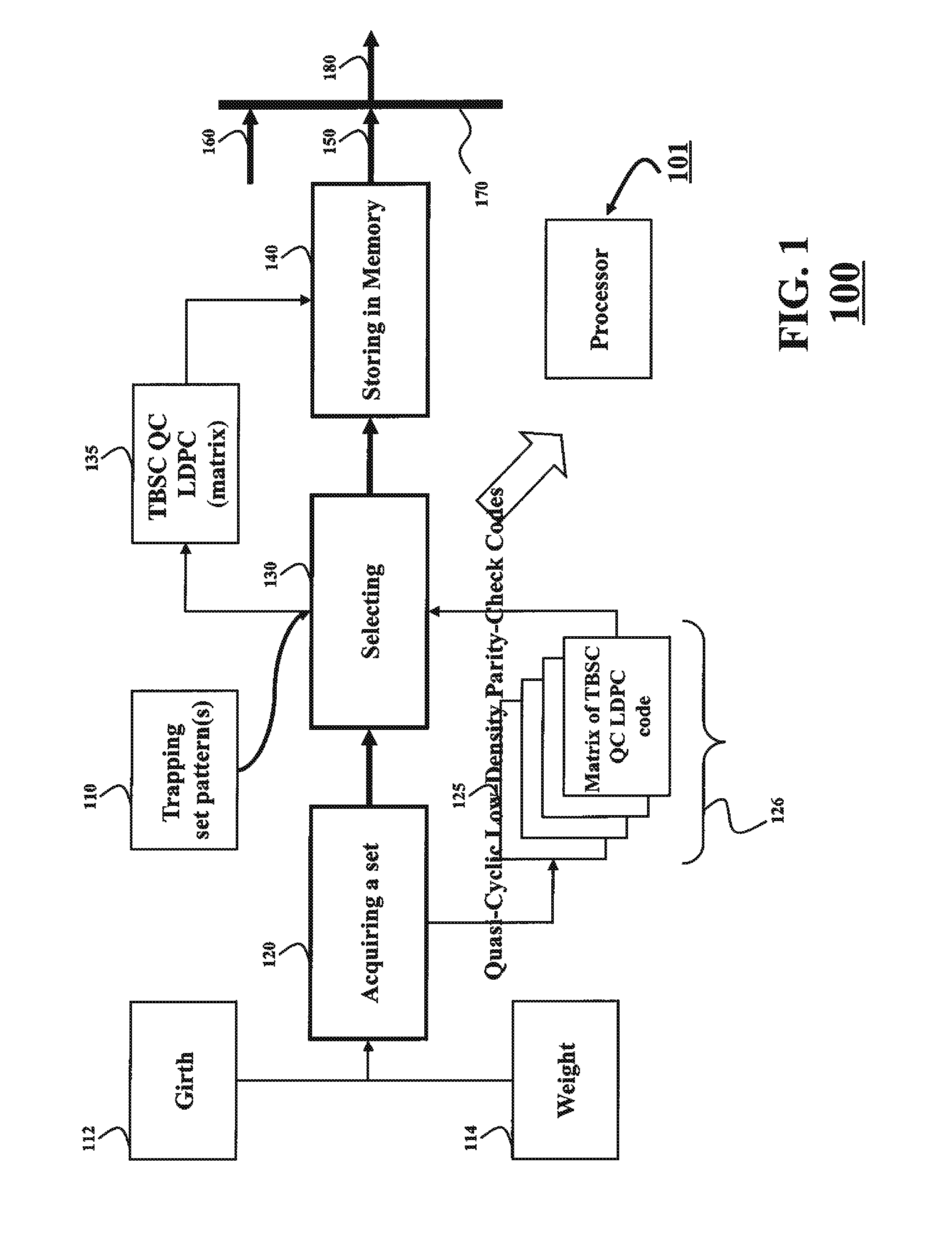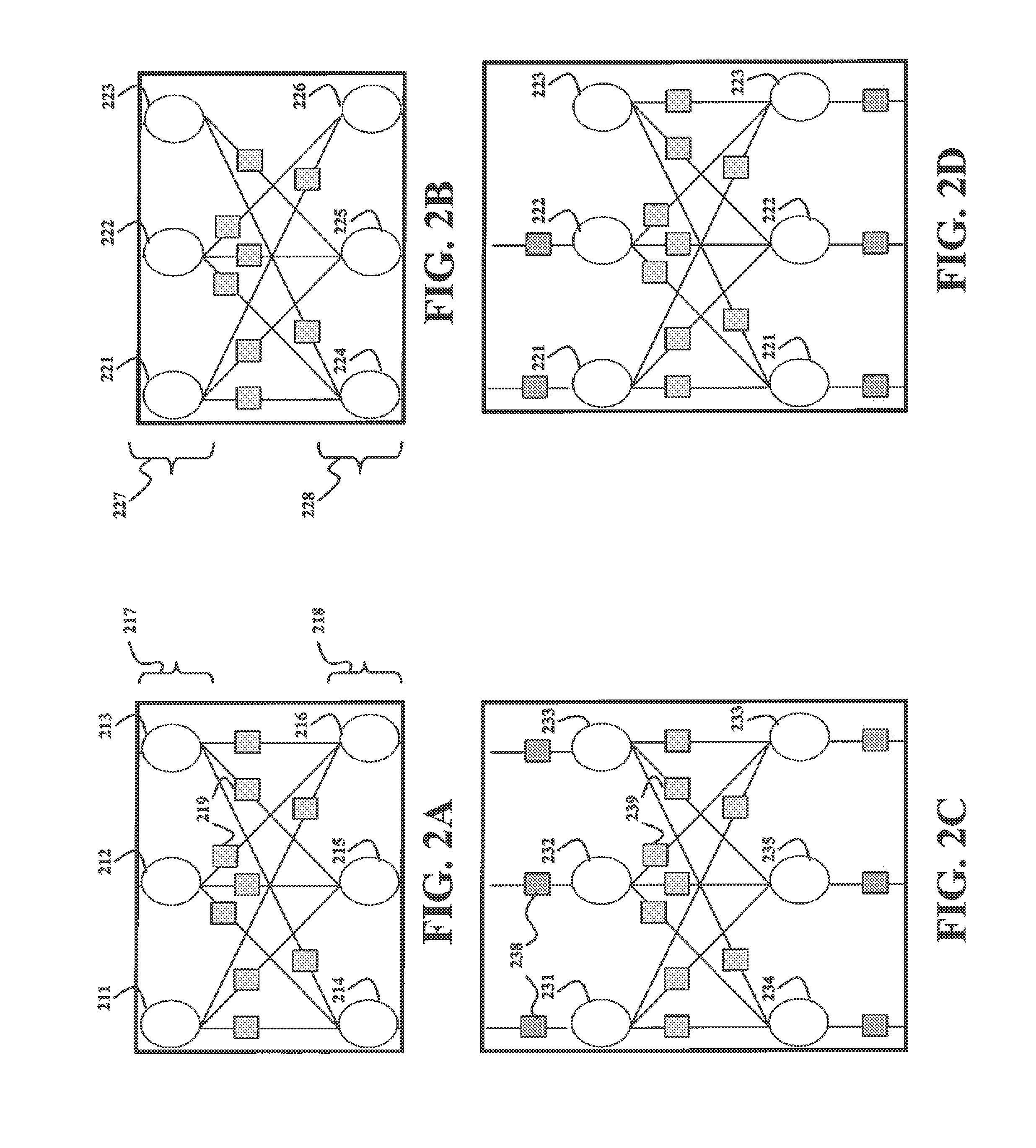Quasi-cyclic low-density parity-check codes
a low-density parity and code technology, applied in the field of qc low-density parity parity check (ldpc) codes, can solve the problems of difficult detection, construction and verification of completeness of such a database, or at least impractical in real time, and achieve the effect of optimizing waterfall performance code and avoiding error floors
- Summary
- Abstract
- Description
- Claims
- Application Information
AI Technical Summary
Benefits of technology
Problems solved by technology
Method used
Image
Examples
Embodiment Construction
[0027]FIG. 1 shows a block diagram of a method 100 for determining a quasi-cyclic (QC) low-density parity-check (LDPC) code, such that the QC LDPC code has no trapping sets, according to some embodiments of the invention. The method can be performed by a processor 101, which can be operatively connected to a memory and input / output interfaces, as known in the art.
[0028]A set of matrices 126 representing a family of QC LDPC codes is acquired 120. Each QC LDPC code is a tail-biting spatially-coupled (TBSC) QC LDPC code of girth 112 having a value not less than eight, and each column of each matrix 125 in the set has a weight 114 having a value not less than four. The set of matrices can be determined, e.g., using a skeleton based matrix as described below, or received over a wired or wireless channel.
[0029]Next, the method selects 130, based on a trapping set pattern 110, a matrix 135 from the set of matrices, such that the matrix 135 represents the QC LDPC code without trapping sets....
PUM
 Login to View More
Login to View More Abstract
Description
Claims
Application Information
 Login to View More
Login to View More - R&D
- Intellectual Property
- Life Sciences
- Materials
- Tech Scout
- Unparalleled Data Quality
- Higher Quality Content
- 60% Fewer Hallucinations
Browse by: Latest US Patents, China's latest patents, Technical Efficacy Thesaurus, Application Domain, Technology Topic, Popular Technical Reports.
© 2025 PatSnap. All rights reserved.Legal|Privacy policy|Modern Slavery Act Transparency Statement|Sitemap|About US| Contact US: help@patsnap.com



